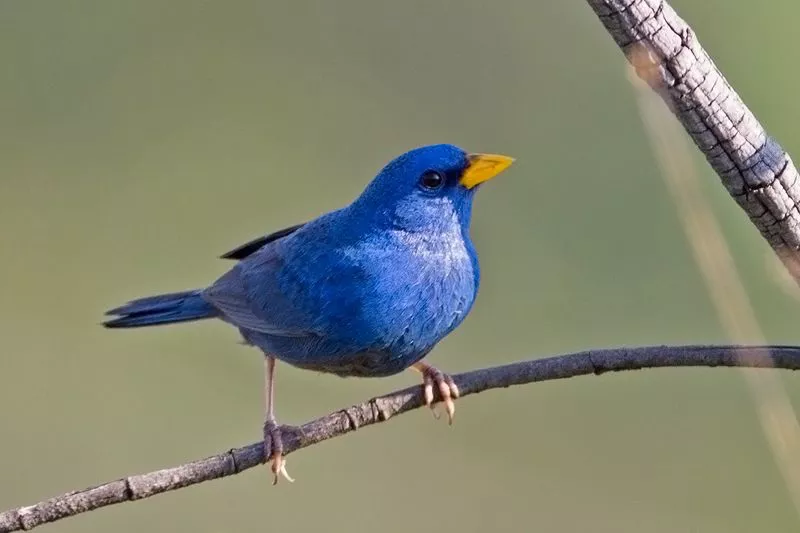Blue Finches, scientifically known as Passerina caerulea, are charming and colorful songbirds that attract attention with their vibrant plumage and sweet melodies. In this article, we will delve into the habitat preferences and distribution of Blue Finches, shedding light on their geographic range and the environments they call home.
Habitat Preferences:
Blue Finches are native to North America, specifically the western and southwestern regions of the United States and parts of Mexico. These birds exhibit a versatile habitat range, occupying diverse environments throughout their distribution. They can be found in a variety of habitats, including open woodlands, riparian areas, scrublands, grasslands, and forest edges. Blue Finches are particularly attracted to areas with abundant vegetation, such as shrubs, bushes, and trees, which provide both nesting sites and food sources.
Geographic Range:
Blue Finches are primarily distributed in the western and southwestern parts of the United States. Their range extends from southern Oregon and Idaho through California, Nevada, Arizona, and New Mexico. In Mexico, they are found in parts of Baja California, Sonora, and Sinaloa. While they are mainly resident birds within their range, some individuals may engage in localized seasonal migrations, particularly in response to changes in food availability or breeding requirements.
Specific Habitats:
Blue Finches display a preference for habitats with a mix of open spaces and dense vegetation. They can often be spotted in woodland edges, where trees meet open grassy areas or meadows. Riparian areas, characterized by rivers, streams, and associated vegetation, are also favored by Blue Finches due to the presence of water sources and a rich variety of plant life. Additionally, Blue Finches can adapt to human-altered landscapes, such as gardens, parks, and orchards, where they can find suitable nesting sites and food resources.
Nesting and Breeding:
Blue Finches construct their nests in dense shrubs, bushes, or low tree branches, using a combination of twigs, grass, and leaves. Their nests are typically cup-shaped and well hidden within the vegetation, providing protection from predators and the elements. Breeding season for Blue Finches usually begins in late spring or early summer, during which males engage in elaborate courtship displays to attract females. Once mating occurs, the female Blue Finch lays a clutch of 2-5 eggs, which she incubates for approximately 12-14 days. Both parents participate in raising the young, feeding them a diet primarily composed of insects and seeds.
Conservation:
Blue Finches are generally considered to have stable populations and are not currently listed as threatened or endangered. However, it is crucial to maintain and protect their preferred habitats to ensure their continued well-being. Preservation of open woodlands, riparian areas, and other suitable habitats is essential, as these provide the necessary resources for breeding, foraging, and nesting. It is also important to minimize the impact of habitat fragmentation and human disturbances, such as excessive noise or disturbance of nesting sites, to support the long-term conservation of Blue Finches and their habitats.
Conclusion:
Blue Finches are delightful songbirds with a range extending across western and southwestern regions of the United States, as well as parts of Mexico. Their adaptability allows them to thrive in various habitats, including woodlands, riparian areas, scrublands, and forest edges. Understanding their habitat preferences and distribution helps us appreciate the ecological role they play in these environments. By ensuring the preservation and conservation of their preferred habitats, we can contribute to the continued existence and well-being of Blue Finches for generations to come.
Related topics:


 Facebook
Facebook  Instagram
Instagram  Youtube
Youtube 